1. Komodo Islands

Komodo Island and national park reserve offers just about every type of tropical diving imaginable – from calm and colourful shallow reefs alive with hundreds of colourful reef fishes and crammed with invertebrates, to current-swept deep water sea mounts, walls and pinnacles patrolled by sharks, tuna and other big fish. The variety of marine life for scuba diving in Komodo rivals the world’s best dive destinations. This is the world’s epicentre for marine diversity and you’ll see loads of stuff here on a diving cruise that you just won’t see anywhere else in the world – From whale sharks, sunfish, mantas and eagle rays to pygmy seahorses, ornate ghost pipefish, clown frogfish, nudibranchs and blue-ringed octopus – all at home amongst a spectacular range of colourful sponges, sea squirts, tunicates and corals – a macro enthusiast’s heaven. The island is also famous for its Komodo dragon monitor lizard, the largest lizards in the world. An alert and agile predator and scavenger that can reach 2.5 metres in length and 125 kg, they are known locally as ‘Ora’ and now about 1,100 inhabit the island and about half that live on nearby Rinca Island.
2. Bunaken Island
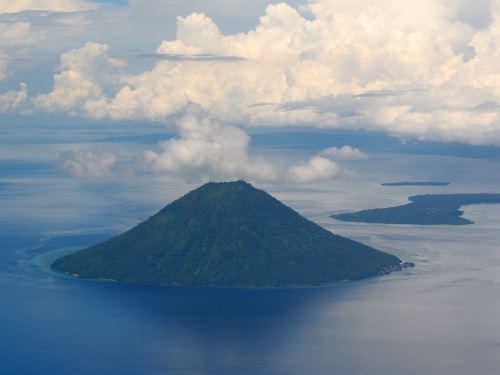
To dive in the deep waters of the Bunaken Island National Marine Park in Manado is to be among some of the highest levels of biodiversity in the world, with outstanding fish variety and world-class wall diving. When you’re scuba diving in Bunaken you can see seven times more genera of coral than Hawaii, 33 species of butterflyfish and over 70% of all fish species known to the Indo-western Pacific. From the smallest commensal shrimp to black tip reef sharks and eagle rays, there is something for everyone in this very special destination. Bunaken diving is very popular with fun divers and marine biologists both of whom can take great pleasure from the diversity of coral and fish found here. You will surely encounter marine life here that you have not come across elsewhere. Various schemes are being undertaken to encourage responsible attitudes towards the reefs, the sea life and with regards to refuse disposal in the area. In Bunaken your few dollars really do make a difference!
3. Raja Ampat Islands

Located off the northwest tip of Bird’s Head Peninsula on the island of New Guinea, Raja Ampat, or the Four Kings, is an archipelago comprising over 1,500 small islands, cays and shoals. Put simply, Raja Ampat diving is the bees knees in the world of scuba. If you don’t enjoy your dives here, you may as well sell your dive gear! According to the Conservation International Rapid Assessment Bulletin, the marine life diversity for scuba diving in Irian Jaya is considerably greater than all other areas sampled in the coral triangle of Indonesia, Philippines and Papua New Guinea – the cream of the cream in world diving. Over 1,200 fish species – a world record 284 on one single dive at Kofiau Island, the benchmark figure for an excellent dive site of 200 fish species surpassed on 51% of Raja Ampat dives (another world record), 600 coral species , 699 mollusc species – again another world high. The term “Frontier Diving” seems to have been invented for Raja Ampat in Irian Jaya. To visit these waters is to feel at the edge of the earth. To gaze over crystalline seas at the beehive-shaped, largely uninhabited islands is to be as far away from it all as you can imagine. At night time in Misool you can peer out at the horizon and maybe see one or two distant specks of light.
4. Bali Islands
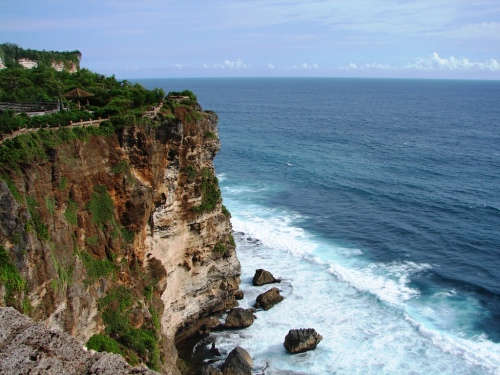
One of the most beautiful islands in the world, Bali is Indonesia’s most popular dive holiday destination. Many visitors find the attraction of good shore-based diving set against a stunning back drop of huge, magnificent volcanoes and picturesque rice paddy terraces, simply irresistible. The greatest feature of scuba diving in Bali is the rich and varied sites – deep drop-offs and steep banks, coral ridges and bommies, one of the most famous wrecks in the world, volcanic outcrops and seagrass beds. With the colourful and diverse marine life, there’s enough here to keep you coming back for more. If you wanted to record all the animals you can see here, you’d need to bring along a mini-library of marine guide books. From hairy frogfish, cockatoo leaf fish and pygmy seahorses in Secret Bay and Menjangan on the north west tip of the island, to bumphead parrotfish and reef sharks in the north and east at Tulamben and Candi Dasa, to the sunfish and trevallies of nearby Nusa Penida and Lembongan islands, the Bali sights are truly fascinating. Allow yourself to be surprised for you really never know just what you might see in this ever-changing underwater jewel.
5. Sumbawa & Flores Islands
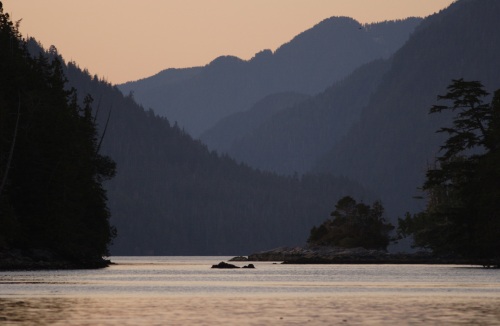
Diving in Flores gives you the perfect chance to add new, small fish and aquatic animals to your knowledge base since it is known for its endemic species. Although the combined effects of dynamite fishing and the earthquake and tsunami of 1992 caused damage to certain areas including Maumere, the regeneration of the reefs here is cause for celebration. Space was cleared by these natural phenomena, which has allowed new corals to flourish and bring an even greater diversity to the sites. These sheltered and varied havens offer crystal-clear waters, deep and vibrant walls, steaming underwater volcanic vents, fertile breeding grounds and conditions that are prefect for some fantastic macro diving opportunities. Sumbawa scuba diving has its own vast schools of countless triggerfish and butterflyfish, macro sightings of blue-ringed octopus, clown frogfish and nudibranchs, numerous reef sharks and tunas in the deep walled sections. Allied to this are the topside visual attractions of volcanoes and bat colonies, and you’ll soon have enough reasons to plunge deep and explore the underwater tapestry of Sumbawa.
6. Lombok island
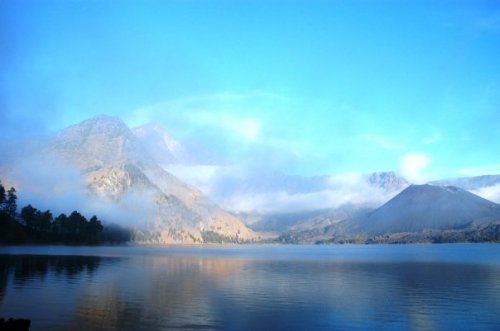
Some People think they have seen it all, but they dont, Lombok diving offer spectacular diving destination with untouched coral reefs, pinnacles and home of “Hammerhead” sharks and other giant creatures. For divers who would like to enjoy some pristine dive sites, we offer a world of 100% intact coral and a unique variety of species. “…It’s an Eldora do for underwater photographers.” Lombok are the perfect place when you want to escape from it all. The peaceful Lombok atmosphere is the best place for holiday with white sand beach and under water panoramas. The many drop-offs, plateaus and slopes around the Lombok”s reflect a good cross-section of what Indonesia has to offer. Dive in and be fascinated by a variety of turtles, White-tip Reef Sharks, Cuttlefish, Moray Eels, Angel Fish, Ghost Pipefish, Snappers, Mantas, Eagle rays and more. This is always a very popular dive site which will offer you a large diversity and abundance in marine on a single dive. The sea mounds and canyon walls differ in size and offer you an interesting collection of overhangs and outcrops, all covered in a variety of hard and soft corals. Huge sea fans and other interesting coral formations will fascinate you from start to finish.
7. Bangka & Belitung Islands
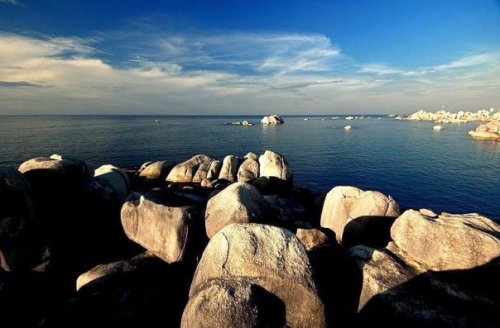
The islands of Bangka and Belitung, with its rolling hills of green fields and forests, and the nearby islands of Gangga and Talise offer over 25 dive sites with fringing reef slopes and pinnacles carpeted in soft corals. The row of underwater boulder pinnacles that just break the surface here form giant steps underwater. This is a drift dive that requires a negatively buoyant entry, as waves can be present at the surface at drop off and pick up points. As you descend down the pinnacles you will marvel at the proliferation of green and golden brown soft corals, huge elephant ear sponges, dense thickets of branching green cup coral and table corals. There are carpets of frilled leather corals and pink, brown, cream and lilac soft coral trees swaying in the shallow surge. “Breathtaking” and “awesome” are oft-used words on the boat after this Bangka & Belitung dive.
8. Banda Islands
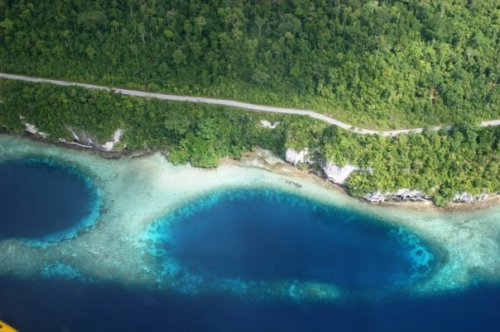
Seemingly insignificant islands in the middle of nowhere in the Banda Sea, in fact the Banda Islands are steeped in history and blessed with some of the finest diving in the country. Central to the spice trade of old, and former home to exiled freedom fighters, the islands are now enjoying a growing reputation for what goes on below the surface. The remoteness of the islands in the wide open Banda Sea, and the low levels of human population, have meant less fishing pressures, and a vibrant, natural and healthy reef system. The results of this are fishes in incredible numbers, huge seafans and sponges, and some monumental hard corals. At most sites you’ll see enormous schools of fusiliers and thousands of redtooth tirggerfish. One certainty is that you will see plenty of big stuff as well as no shortage of colourful reef life. Topside, these islands boast climbable volcanic mountains which are covered in lush green vegetation. For a taste of historic atmosphere going ashore in Banda Neira is a must for its remnants from the old spice trade of colonial times.
9. Wakatobi Islands
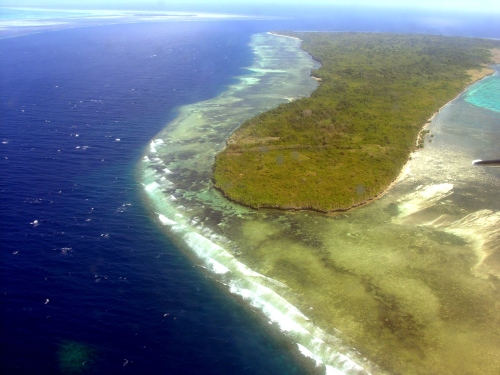
Rising from the depths of the Banda Sea, the main islands of Wangi, Kaledupa, Tomea, Binongki – WaKaToBi – dish up large portions of all the world’s reef types – fringing, atoll and barrier – and are served with lashings of healthy corals and dense schools of fish. Being a national park, fishing is strictly limited and the reefs are protected, meaning plenty of action for you the diver. Local fishing communities obtain a fair share of the income generated by dive tourism in exchange for adopting more sustainable practices, such as leaving large stretches of reef completely untouched. Other contributions go towards education and strengthening local support for the marine park. Word is beginning to spread about Wakatobi but it is still relatively new. Indeed there are even new sites out there waiting to be discovered, particularly in the outer atolls which are virtually untouched. Dive in and discover the animal attractions here in the Banda Sea.
10. Sangihe & Talaud Archipelago
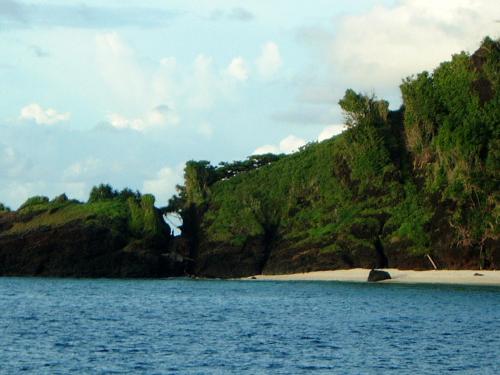
The Sangihe Archipelago is a chain of volcanic islands off the north east peninsula of North Sulawesi. Consisting of about forty volcanic islands some of which are over 1,500 metres high, the archipelago’s waters are some of deepest in the world and deep-water currents bring plankton and nutrients from the deep. Be the man from Atlantis by diving what was once a thriving village. Feeling like an archeologist you cruise around through the numerous black corals and investigate the tunnels and doorways. Diving here amongst topography carved out by man’s own hand stands in stark contrast to the norm of diving among nature’s splendour and is definitely one you won’t forget. Diving just off the dormant volcano of Ruang Island always gets the thumbs up from those who have been here. It is as if the Creator has put every shape, size and colour of sponge and crinoid here in this one spot. This provides a magnificent backdrop against which you can spot some of the many sharks, dogtooth tuna and extraordinarily large schools of barracudas that call this place home.
sumber : http://syadera.wordpress.com/2008/12/26/indonesia-top-10-spot-diving/
sedikit tentang laut, walaupun tak akan habis kajian, penelitian serta apa pun yang kita lakukan untuk tahu lautan itu seperti apa.
Rabu, 09 Februari 2011
Indonesia Top 10 Spots (Diving)
Langganan:
Posting Komentar (Atom)
Tidak ada komentar:
Posting Komentar
comment yo..